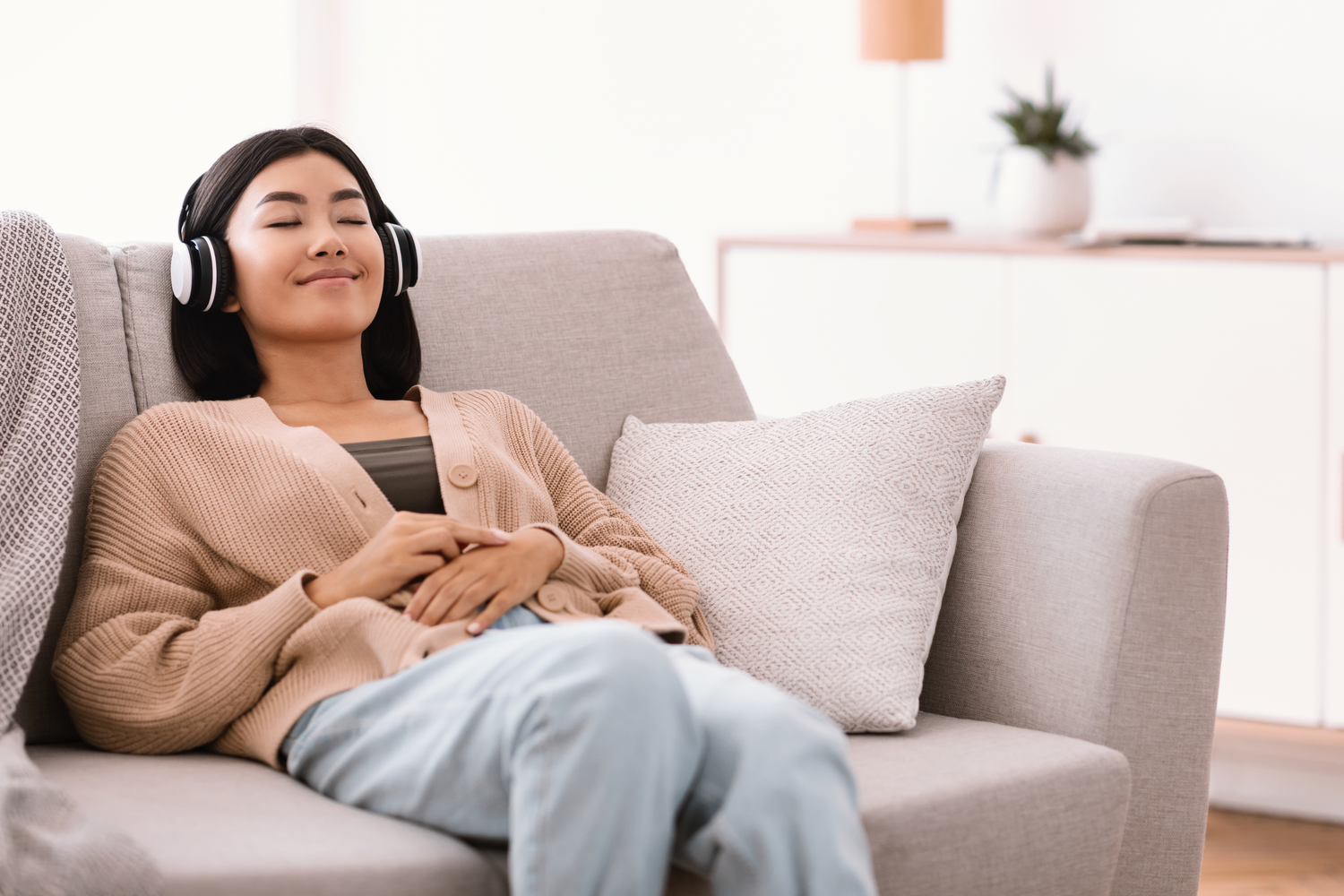In a culture that increasingly glorifies constant distractions and “hustle” culture, (sadly, we do not mean the dance) it’s getting more and more difficult to focus. We tend to think hunkering down and “powering through” will somehow drive us to accomplishment and pride over our productive selves. Instead, we run the risk of getting sloppy, slower, and sometimes having to repeat the same tasks. And it only makes us foggier and crankier. But studies prove that mental breaks—sometimes referred to intentional “disconnecting”—can lead to fresh perspectives, better decision making, and better quality work overall. Sure, walks and snacks help. Maybe even your favorite feel-good tune (like “The Hustle”) can recharge you. That’s where we come in—with another aural approach to your own mental factory reset. So, as you get ready for your best work year yet, we present to you—a hard-working and perhaps over-stressed person—a way to break free, even if for a bit. It’s a tactic known as binaural beats.

What are Binaural Beats?
Binaural beats are an auditory device that use tones of two different frequencies (hertz), one in each ear, to create a third within your brain. This third noise is a unique beat that doesn’t actually exist but is an auditory trick that convinces your brain it does, and in response, it sends neural signals throughout your body in line with this third, imaginary, beat.
Essentially, a Binaural Beat is an illusion created by the brain.
How do binaural beats affect the brain?
In conjunction with this illusionary sound, binaural beats work with the frequencies of your brain to help encourage states of mind. Here’s a quick overview of brain waves based on an article from Scientific American:
So, what does all this information on brainwaves have to do with binaural beats? Well, the beats send signals throughout your body, which results in an effect called entrainment. Brainwave entrainment (also called brainwave synchronization) occurs when your brainwaves synchronize to external stimuli, which in this case is our binaural beats. It’s like the concept of entering a “flow state,” commonly seen in yoga and meditation practices.
What can binaural beats do?
Binaural beats can be used to
- help create a mental space for various activities and
- encourage desired results from such activities through brain waves
For example, binaural beats can be used to encourage a better state of meditation, more focused study and/or work sessions, and even to reduce anxiety. Such states can, in turn, affect heart rate, attention span, and cognitive function in a positive way. There are also studies out there that suggest binaural beats may even be effective for those with ADD/ADHD!
Are binaural beats really effective?
The colloquial jury is still out on the efficacy of binaural beats. Science hasn’t proven that they are effective, but they haven’t disproven it either. So, if you pursue your own research, you will be met with mixed scientific reviews and lots of anecdotal evidence from people who have tried using them. The good news is that you get to be your own judge of the benefits of binaural beats!

When you conduct your own experiment, the most important thing to remember is that you must listen to binaural beats with headphones! If you try to listen with speakers, it produces a “monoaural” effect, which defeats the purpose. So, make sure you keep your headphones charged and handy – the Wood Headphone Stand is the perfect accessory to encourage a focused listening session.
Which are the best binaural beats for concentration and studying?
One resource-based source says that that “a consistent beat with a steady, repetitive pulse… played at ‘coffee shop’ levels (i.e. loud enough to hear but low enough to carry on a conversation)” are optimal for a concentration environment. Here’s a few links to get you started:
- 90 Minutes of Focused Studying: The Best Binaural Beats
- Focus Music, Binaural Beats Concentration Music for Studying, Super Intelligence
- Deep Focus Music - Binaural Beats Concentration Music, Study Music
Ready to give it a try?
Be sure to prepare your environment and schedule so you can effectively experiment with binaural beats. Some ambient noise is okay (coffee shop levels) but in addition to headphones, please consider:
- Setting your devices to “do not disturb” or focus mode
- Checking your calendar to make sure there are no forthcoming meetings
- Making sure you’re not expecting a call or visit for at least 15 minutes
Best of luck as you brave new audio territories! Keep in mind that the properly equipped workspace, one that blends ergonomics and atmosphere, can only improve your workday experience. Head over to Vitrazza to see how beautiful Glass Chair Mats and Office Accessories harmonize look and feel for any study or office.


